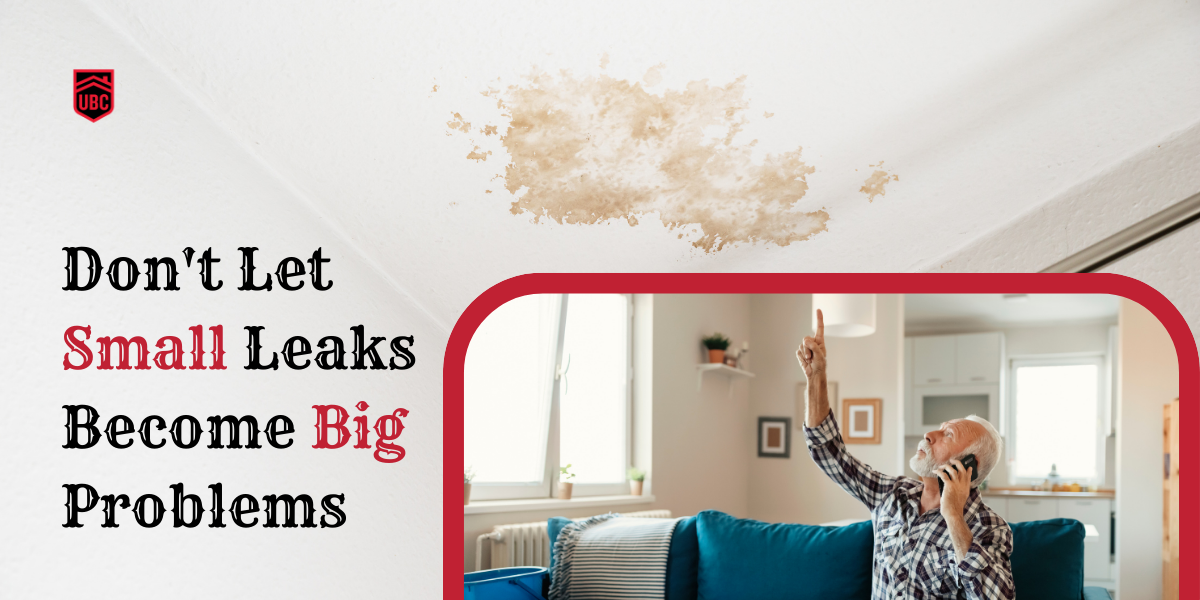Don’t Let Small Leaks Become Big Problems
Homeowners take pride in their property but often overlook small issues. These minor problems can escalate into major headaches if neglected. Regular maintenance and prompt attention to repairs are crucial for protecting your investment. Stay vigilant and address concerns early to maintain your home’s value and comfort.
The Hidden Dangers of Small Leaks
Small leaks might seem insignificant at first glance, but they can lead to severe consequences if ignored. Here’s why you should take them seriously:
- Water Damage: Even a tiny leak can cause extensive water damage over time, affecting walls, floors, and ceilings.
- Mold Growth: Moisture from leaks creates the perfect environment for mold, which can pose health risks and require expensive remediation.
- Structural Issues: Persistent leaks can weaken your home’s structure, compromising its safety and stability.
- Increased Utility Bills: Leaks in plumbing or your home’s envelope can lead to higher water and energy costs.
By addressing leaks early, you protect your home from these potential hazards and save money in the long run.
Common Areas Prone to Leaks and Early Warning Signs
Knowing where to look for potential issues is half the battle. Here are some areas to keep an eye on:
Roof and Attic
- Look for missing or damaged shingles
- Check for water stains on ceilings or walls
- Inspect attic for signs of moisture or daylight coming through
Plumbing
- Watch for dripping faucets or running toilets
- Check under sinks for moisture or water stains
- Look for unexplained increases in water bills
Foundation
- Inspect for cracks in walls or floors
- Look for signs of water seepage in basements
- Check for uneven floors or doors that don’t close properly
Windows and Doors
- Feel for drafts around frames
- Look for condensation between panes
- Check for peeling paint or rotting wood around frames
Being vigilant about these warning signs can help you catch problems before they escalate.
The Snowball Effect: How Small Leaks Escalate
Understanding how minor issues can quickly become major problems is crucial for homeowners. Let’s examine the progression:
Roof Leaks
- Day 1: Small drip during heavy rain
- Week 4: Water stain on ceiling
- Month 3: Mold growth in attic
- Year 1: Rotted roof decking, potential structural damage
Plumbing Leaks
- Day 1: Slight drip under sink
- Week 2: Warped cabinet bottom
- Month 2: Mold growth in cabinet and wall
- Year 1: Compromised flooring, potential foundation issues
Foundation Cracks
- Month 1: Hairline crack in basement wall
- Month 6: Crack widens, slight water seepage
- Year 1: Significant water intrusion, soil erosion begins
- Year 3: Major foundation shift, structural integrity at risk
By understanding this progression, you can appreciate the importance of addressing issues at the earliest stage.
Identifying Leak-Prone Areas in Your Home
Knowing where leaks commonly occur can help you focus your prevention efforts:
Roof and Attic
- Flashing around chimneys and vents
- Valleys where roof planes meet
- Age-worn or damaged shingles
Plumbing Systems
- Pipe joints and connections
- Toilet seals and wax rings
- Washing machine hoses
Foundations
- Where walls meet the floor
- Around windows and doors in basement
- Cracks in foundation walls
Windows and Doors
- Weatherstripping and seals
- Window sills and frames
- Door thresholds
By regularly inspecting these areas, you can catch potential issues before they escalate.
The Importance of Regular Maintenance Schedules
Establishing a routine maintenance schedule is key to preventing small leaks from becoming big problems:
Monthly
- Check for visible leaks under sinks and around toilets
- Inspect caulking around showers, tubs, and sinks
- Look for water stains on ceilings and wall
Seasonally
- Clean gutters and downspouts
- Inspect roof for damaged or missing shingles
- Check window and door seals for drafts
Annually
- Have HVAC system professionally serviced
- Inspect attic for signs of leaks or inadequate ventilation
- Schedule a professional plumbing inspection
Adhering to this schedule can help you stay ahead of potential issues and maintain your home’s integrity.
The Hidden Dangers of Unchecked Leaks
While visible damage is concerning, unchecked leaks can lead to less obvious but equally serious problems:
Health Risks
- Mold and mildew growth can cause respiratory issues.
- Standing water can attract pests, increasing the risk of disease.
Structural Integrity
- Persistent moisture can weaken wooden structures.
- Water intrusion can corrode metal fasteners and supports
Energy Efficiency
- Leaks in your home’s envelope can lead to significant energy loss.
- Damp insulation is less effective, increasing heating and cooling costs.
By addressing leaks promptly, you protect not just your home, but also your family’s health and your wallet.
Don’t Let Small Leaks Sink Your Ship
Remember, when it comes to home maintenance, the old adage “an ounce of prevention is worth a pound of cure” couldn’t be more true. By staying vigilant and addressing small leaks and issues promptly, you’re not just maintaining your home – you’re protecting your investment and ensuring a safe, comfortable living environment for years to come.
At United Building Contractors, we’re committed to helping homeowners like you keep their properties in top condition. If you’ve noticed any concerning signs or simply want a professional assessment of your home’s condition, don’t hesitate to reach out. Our team is ready to help you tackle any maintenance challenges, big or small. Contact us today to learn more about our comprehensive home inspection and maintenance services.







